CSotD: Catching up on semi-politics
Skip to comments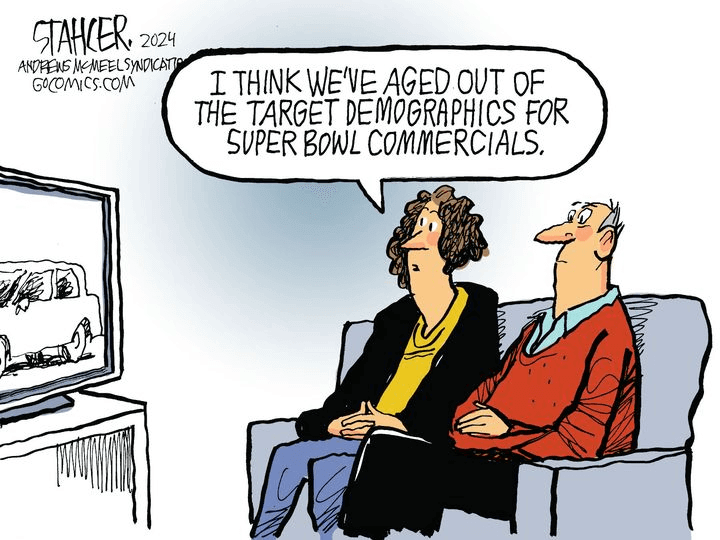
Jeff Stahler (AMS) taps into something that occurred to me during the game. A lot of what they were advertising was of little interest to me, but I also had a sense of “been there, seen that” as creative ideas seemed replaced by celebrity cameos.
Celebrity cameos were once a delightful surprise because they only appeared in a few commercials. When two-thirds of the commercials are based around cameos and little else, well, so what?
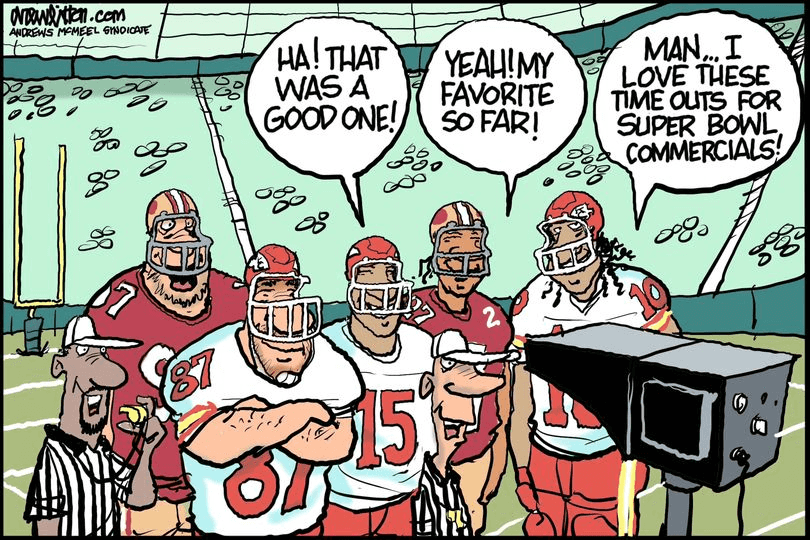
Drew Litton (AMS) and I seem to agree that it felt like they stopped the game a lot longer than normal. I wish it had been for some “good ones.”
We’ll get back to this topic a little later.
Juxtaposition of the Day
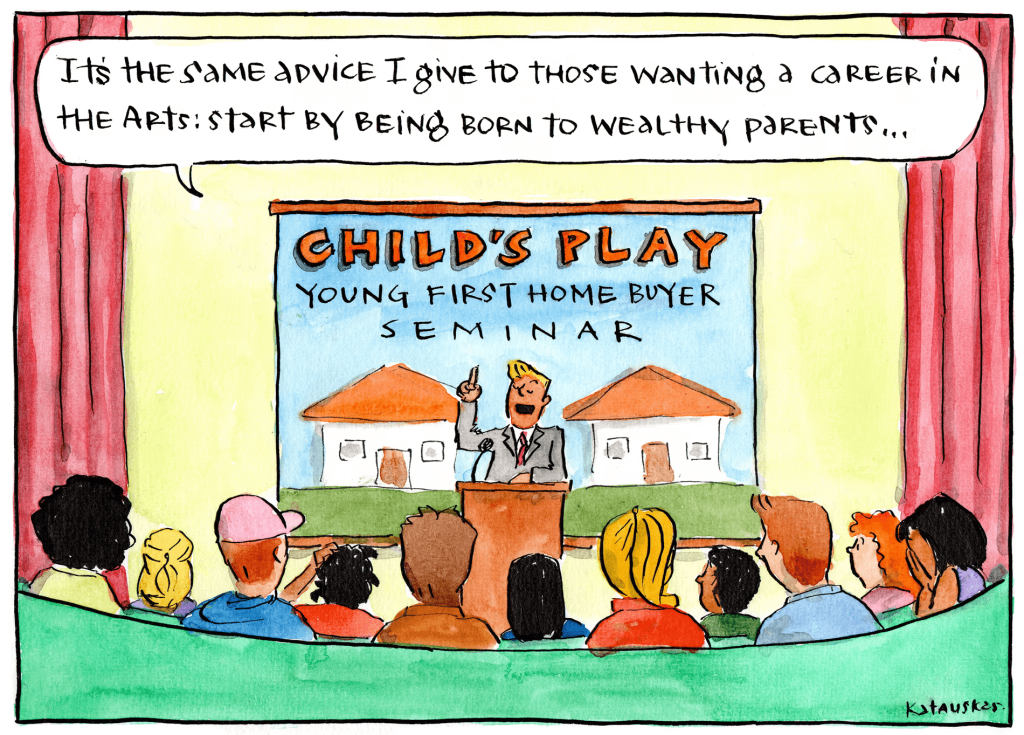

Housing isn’t any more affordable in the US than it apparently is in Australia and the UK.
I like Katauskas’s take because, while political cartoons are under no obligation to be funny, it’s a bonus when they can crack a joke without losing focus, and this is a case of “It’s funny, ’cause it’s true.”
Or, to put it another way, it’s funny but I didn’t laugh because the gag is spot on and it’s more than just a shame. It borders on the criminal.
With luck and persistence, young people can find jobs that should set them up well, but between student loan debt and the cost of rent, they’re lucky to pay their day-to-day bills, never mind saving up for a down payment some time before they turn 50.
I’m not sure Morland’s guru offers a useful solution. Supply-and-demand comes into it, but that’s not the real issue. Rather, it’s a double-whammy of shameless profiteering mixed with genuine increases in construction costs.
We’ve had a shortage of apartments here, which is a problem for employers trying to house their workers, but now I’m seeing a lot of construction. Adam Smith might expect that to result in lower rents, except a lot of the builders are trying to out-luxury each other, such that the ones who include “affordable” units in their plans mean unaffordable but not entirely fabulous.
If an oversupply of housing does bring down prices, it will be because of an overall economic crash and a lot of people will have no money instead of not enough. I’ve seen it happen, and it wasn’t pretty.
The only solution is to ride it out, and that’s no solution at all unless you’ve already got something to ride on.
Juxtaposition of the Day #2.5

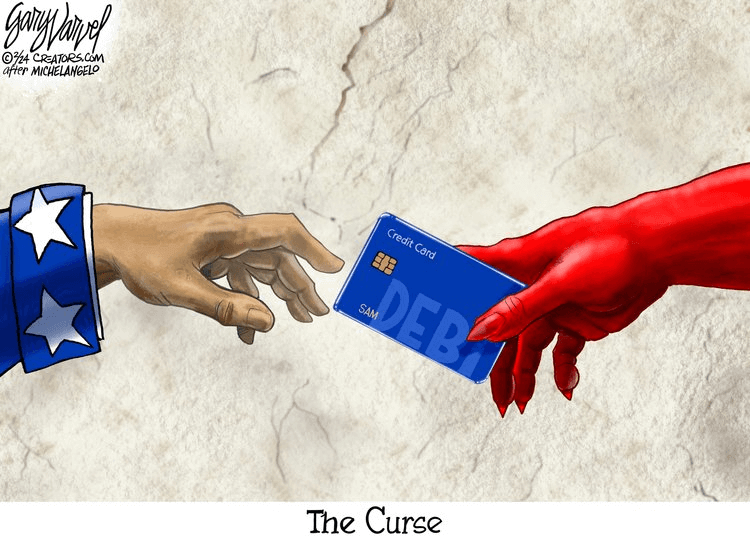
Gary Varvel (Creators) addressed the plight of young Americans, but he did it not as an analysis of the economy but as an attack on Joe Biden, following it up with criticism of government borrowing and the national debt.
Macroeconomic problems impact the microeconomics of the kitchen table, but neither is helped by partisan attacks. The economy is doing quite well right now, and while that hasn’t brought housing prices down, most economic indicators are positive and the uptick is helping individuals.
It’s fair to blame Biden for some of the national debt, though this chart only includes his first two years and the first year of any administration runs on the budget of its predecessor.
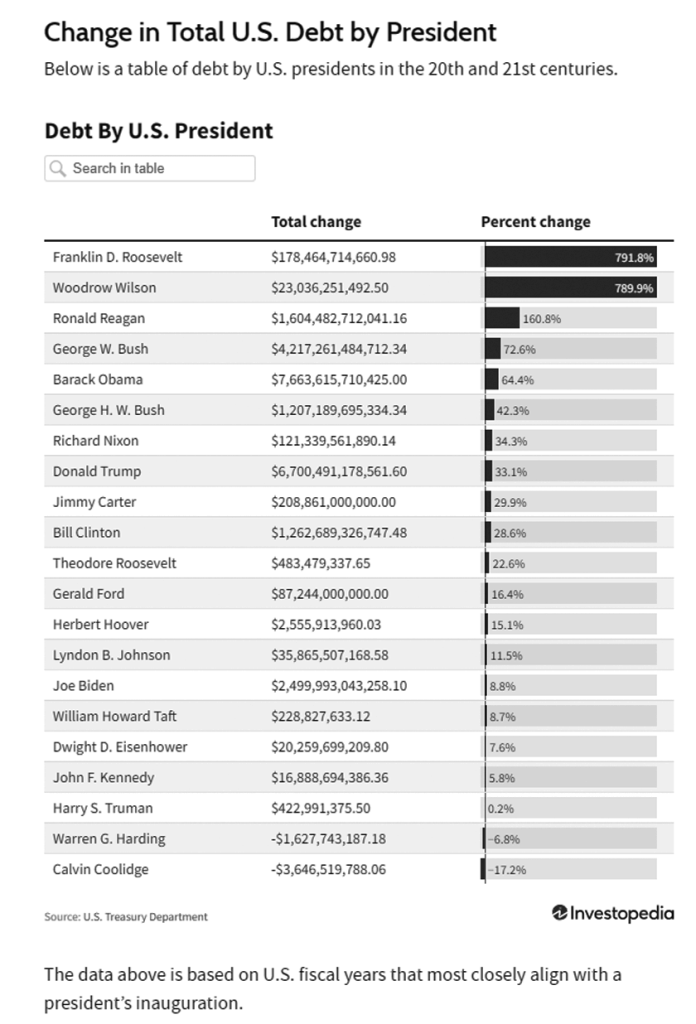
Fighting a world war is expensive, as you’ll see there at the top, but if Biden’s partial results make him look thrifty, a glance at party affiliations overall doesn’t make the Republican Party look all that good.
But the crucial factor is all the other factors: Obama’s numbers look bad because he was cleaning up after the catastrophic crash under W, while Reagan’s debt piled up in large part because of his tax cuts. And no president has nearly as much control over any of it as does the Congress.
History majors won’t get too excited about the savings under Harding and Coolidge, either, because they know how the economy fared after those two had handled it.

As for the kitchen table, it’s only fair to point out that Bidenomics, in addition to bringing lower unemployment, falling inflation rates and a rising stock market, spent on stimulus payments during the pandemic as well as a more generous child tax credit.
It doesn’t all fit in that chart and it’s even harder to fit it into a cartoon, though Clay Bennett (CTFP) summarizes the big picture by breaking it up into six little pictures.
Meanwhile, out in the parking lot …
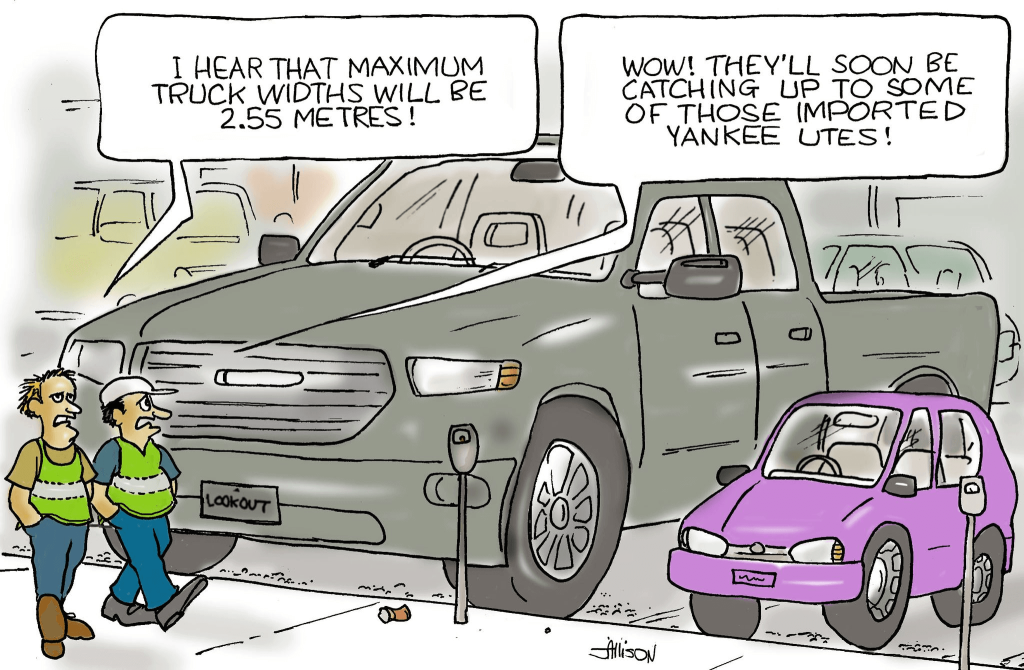
John Allison casts a worried eye at the problem of bulbous vehicles, as Australia looks at increasing the width of parking spaces to accommodate the nation’s love affair with big vehicles.
I get annoyed at not being able to see around the damn things, but here’s a story that goes beyond inconvenience at intersections and in parking lots: Turns out guard rails were designed for sensible-sized cars and the bulbous ones can plow right through.
Which I guess is one solution. All I was going to propose was setting license fees by weight.
Juxtaposition of the Deity
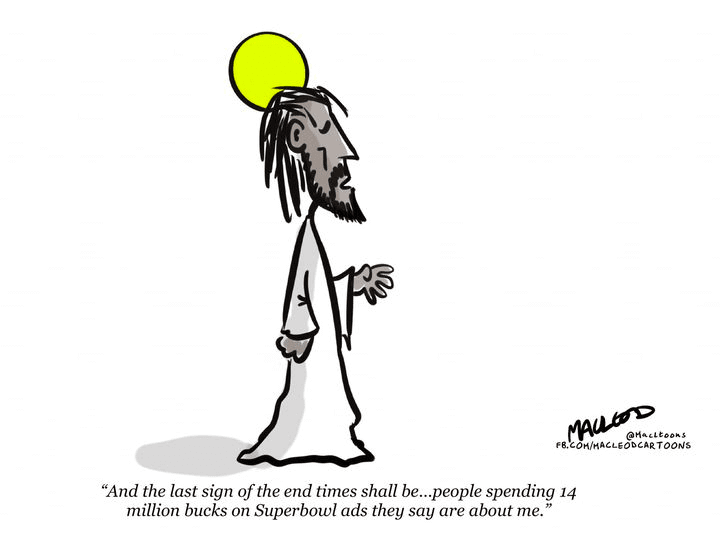
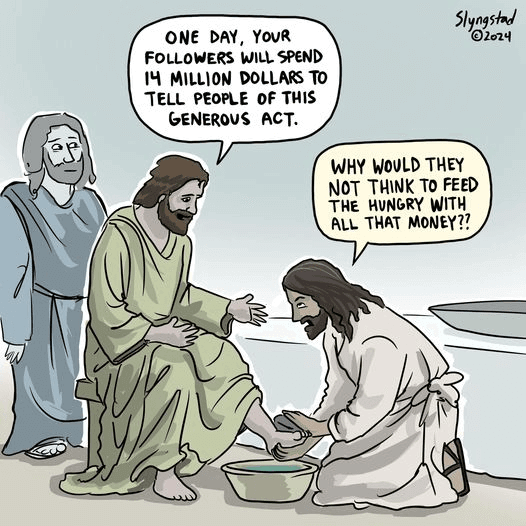
I liked it better when the next-day chatter was about frogs saying “Bud-Why-Zer,” but the Super Bowl ads I’ve seen the most talk about were the “He Gets Us” ads, from people who, like these cartoonists, were angry that money was spent to inspire acceptance, kindness and agape rather than directly in charitable contributions.
Part of it stems from the fact that the group gets major financial support from Hobby Lobby, noted for its refusal to fund birth control for employees and its lobbying for anti-LGBTQ+ laws.
Fair enough — I don’t shop there or eat at Chik-Fil-A — but the company has stepped back from controlling the non-profit, which is purposefully non-denominational and, in fact, includes a message of love for the LGBTQ+ community on its website:

There’s a vocal element of people on-line who hate religion because of how they were treated by specific people in specific churches, but they may get some comfort from knowing that those whited sepulchres were also offended by the ads.
In any case, it’s appropriate to have people criticize the cost of that foot-washing spot. Matthew recorded precisely WWJD:

However, yes, it’s true: They could, instead, have given $21.44 to every homeless person in America, or 76 cents to each child who is on public assistance.
Though not both.


Comments 19
Comments are closed.